From Cape Town to Mombasa, 3 months, 8 countries, 12,500 km: Tanzania #4, by @terresco (translated from French)
This is an authorized translation in English of a post in French by @terresco: De Cape Town à Mombasa, 3 mois, 8 pays, 12 500 km – La Tanzanie 4
As my primary language is not English, there are probably some mistakes in my translation.
Remember that the person who speaks here is NOT me, Vincent Celier (@vcelier), but @terresco, a French guy.
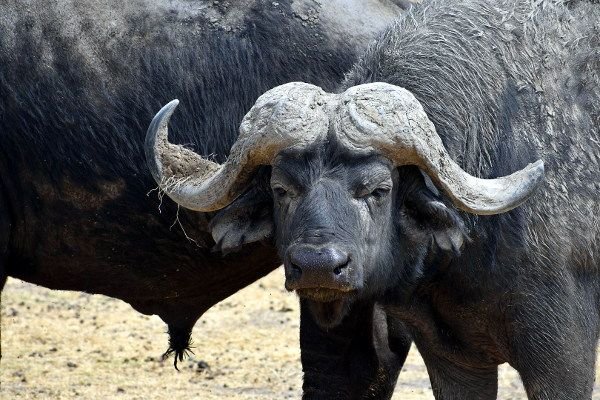
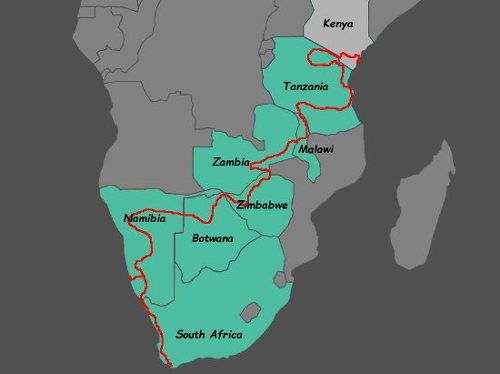
Before doing so, it will be necessary to survive the administration and, more interestingly, to cross part of the Maasai territory.
A region under high protection
To go to the crater we must first go to Arusha, a small town that has developed with tourist activities. It is the administrative management center of this region of Tanzania. As soon as I hear the word administrative I start to panic, it feels the loss of time and the pleasure of infinite forms. Indeed, we must reserve, fill, justify, sign, organize, pay and it is only a big half day and some negotiations later, that authorizations in hand, we can finally take the direction of the reserve.
The Maasai people
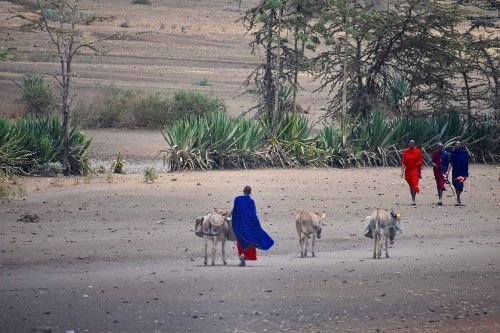
The Maasai, those who speak the Maa language, a semi-nomadic people are divided between Tanzania and Kenya at the pace of the needs of their livestock. Fortunately they are not all warriors. They are mainly breeders. They do not hunt so that's why there are so many animals in these areas. They knew how to preserve them. We hear that in the rites of initiation the young adult must kill a lion, it is forbidden today, and never had to be as frequent as what the legend conveys.

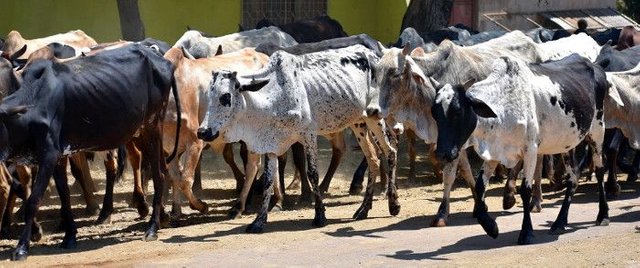
The flock, the wealth of the Maasai
The crater of Ngorongoro
You have to get away from the uninterrupted parade of 4x4, perfect and mandatory tracks, but the place is magical. We arrive at the top, almost always in the morning mist, then once on the ridge we descend into the caldera. The view is impressive, a view of the whole crater, more than 20 km in diameter. The flanks of the caldera are populated by a small forest, the interior is flat, with very little vegetation, which allows to see very far.
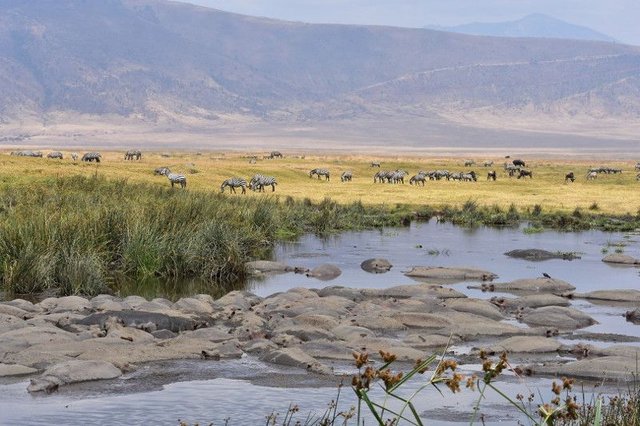
Classic landscape of the crater interior
The animals can not really hide, they see tourists every day and are indifferent. I sometimes wonder what they should think of us. The advantage is that they are not shy, they are easily observed. No river comes out of the crater, the rainwater accumulates in the form of a lake and two swamps. These water points are perfect for animals, especially hippos, and watchful observers as we are.
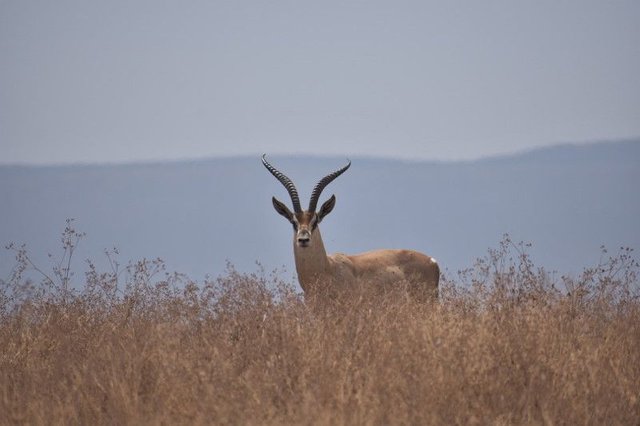
For the first time of the trip we had to abandon our car and board a vehicle dedicated to this excursion. A bit reluctantly but the budget to go with our car was too high. It was not so bad to let drive, no need to think about the dangers of the track and other annoyances, the driver takes care of it for you. Watch, photograph, dream or simply chat with other tourists, companions for the day. We lose independence but one day over three months we can handle it.
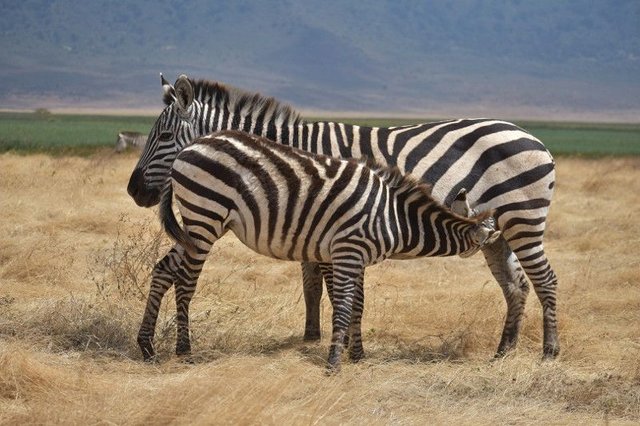
Do not go to this region if you want to discover a culture, meetings are sanitized, it's trade and it's OK, hoping that local people will benefit. Those are unique places, part of the Great Rift Valley, world heritage of humanity and protect as such. Africa is great and there is something for everyone.

Neighbor of Ngorongoro, the Serengeti National Park sees the largest migration of wildebeest and zebras. This is an impressive event that is repeated every year, between Tanzania and Kenya, from the plains of Serengeti to those of Masai Mara, in search of greener pastures depending on the season. Millions of animals must cross a river full of danger, crocodiles must wait for this moment all year round.
On the trail of wildebeest we will migrate to the last country of our trip, Kenya. A border a little complicated but friendly and without stress which will be the last road frontier of the trip.
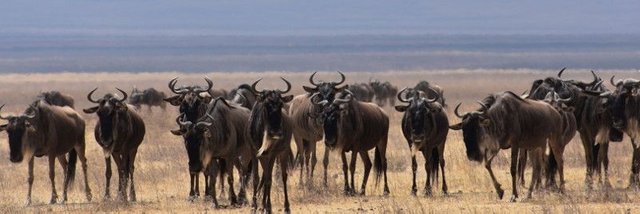
-- @terresco
Africa, the long crossing
From Cape Town to Mombasa: South Africa
From Cape Town to Mombasa: Namibia
From Cape Town to Mombasa: Botswana
From Cape Town to Mombasa: Zimbabwe
From Cape Town to Mombasa: Zimbabwe, part 2, by @terresco
From Cape Town to Mombasa: Zimbabwe, part 3, by @terresco
From Cape Town to Mombasa: Zambia, by @terresco
From Cape Town to Mombasa: Malawi, by @terresco
From Cape Town to Mombasa: Tanzania #1, by @terresco
From Cape Town to Mombasa: Tanzania #2, by @terresco
From Cape Town to Mombasa: Tanzania #3, by @terresco
Hola @vcelier
Hola @terresco
Ver las fotografías para mí es un viaje virtual.
Muchas personas les encanta viajar a NY, Londres, Inglaterra, etc.... ¿Por qué no a Kenia, Tanzania, Botsuana, Angola, etc?
Claro, somos consumidores compulsivos. Consumidores de turismo netamente Capitalista, buscamos lo que no tenemos en nustras tierras en esos países y dejamos nuestros ahorros ahí.
¿Qué nos llevamos? Nada..... Nada más que fotografías en los Mall, Parque de atracciones, Restaurantes, Museos donde se exhiben obras de artistas que veces ni conocemos, etc.
Lamentablemente, no tengo posibilidades de realizar viajes como este por tener otras prioridades y/o no contar con el dinero necesario. Pero como me gustaría hacerlo .
Saludos y Buena Suerte.
I love the African background and tour.
The face of the first animal looks very funny.. 😁
Very nice and long trip. So many country and so many people you can see, amazing journey, thanks for your sharing usefull and valuable post
animals that travel very dangerously and need help from the hands that have a high social to save the animal
I would love to see them, the largest zoo in the world
Something interesting with beautiful scenery and pure nature free from air pollution. Thank you for sharing your most memorable experience, please help to support me.
very nice
@vcelier
Great post and stunning photos, well done, proud pro-africa :-)
stay blessed
Verry great shoot 😍😍😍 love all animal in your post
I have shoot deer in my country too
https://steemit.com/travel/@batuejourney/playing-with-the-deer-in-bandung-indonesia-steemit-travel-journey